History of Maaloula
3. Maaloula > 3.2. History of Maaloula
Last modified April 02, 2023
- Contents
- 3.2.1. Prehistory
- 3.2.2. Recorded History
3.2.1. Prehistory:
Archaeological evidence suggests that hominid species originated in Africa, and the Levant was certainly the main route for the dispersal of Homo erectus into Eurasia. In other words, the Levant is the site of the earliest ancient-human presence outside of Africa.
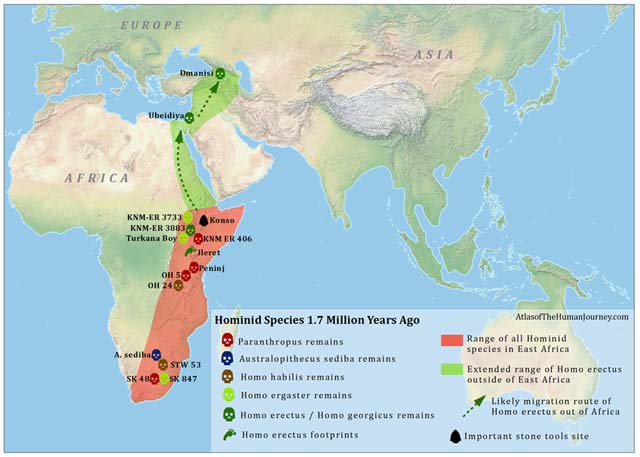
Figure 3.2.1.1: The First Hominid Migration out of Africa {atlasofhumanevolution.com}
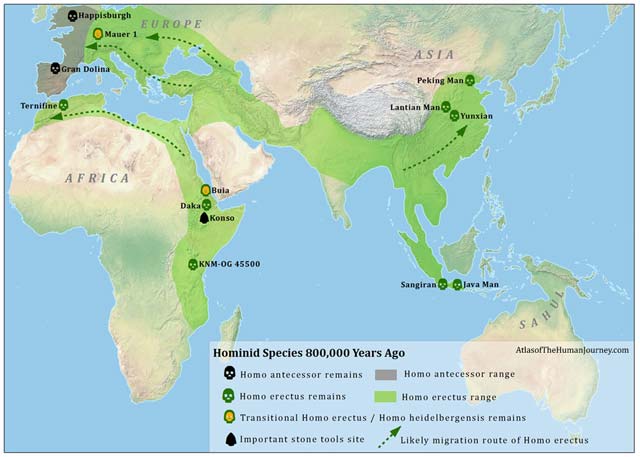
Figure 3.2.1.2: Hominid migration to Europe and Asia {atlasofhumanevolution.com}
Many cultures have succeeded in this region during the prehistoric era, the most important of which are: Oldowan, Acheulean, Mousterian, Aterian, Emiran, Ahmarian, Levantine Aurignacian, Kebaran, Natufian and Khiamian.
Since Maaloula is blessed with a relatively mild climate, perennial springs, flint availability and a large number of rock shelters, the entire area of Maaloula is rich in sites going back to at least the Levallois Middle Paleolithic (250,000 to 300,000 years ago; Conard 2016), though only a few were excavated until now.
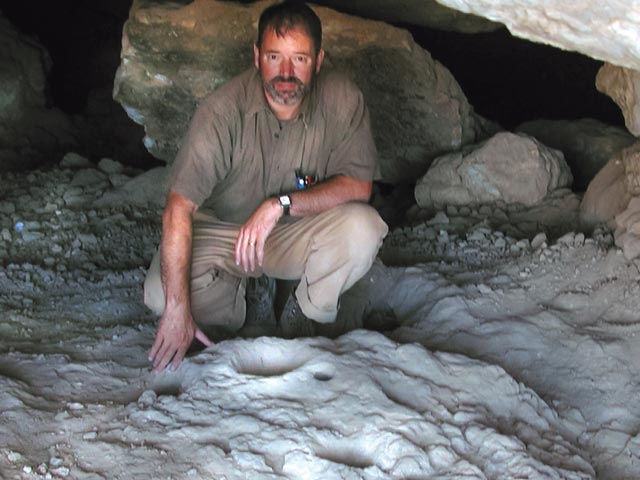
Figure 3.2.1.3: Bedrock mortar to grind grains in one of the caves of Maaloula {Conard: The 2004 Excavation at Kaus Kozah Cave}
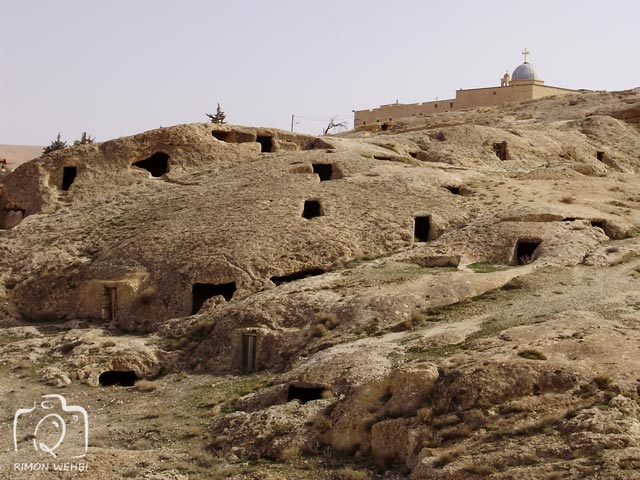
Figure 3.2.1.4: Caves of the Old Maaloulian {© Rimon Wehbi 2009}
3.2.2. Recorded History:
Aram-Damascus:
The Aramaean culture is basically the continuing development of the local culture of the Bronze Age.
Damascus was the capital of what was the most powerful state in the Levant, Aram-Damascus, and Maaloula was one of its towns.
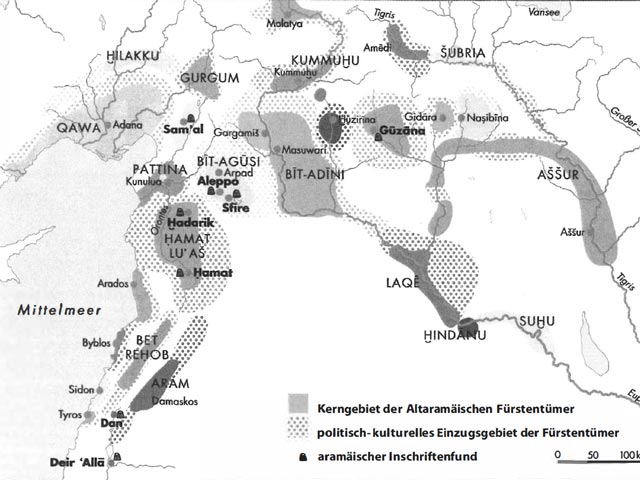
Figure 3.2.2.1: Aramaean kingdoms in the Levant ca. 900 BCE {Gzella: Die Wiege der ersten Weltsprache altaramäische}
Several invasions:
The kingdom of Aram-Damascus was repeatedly attacked by the Neo-Assyrian Empire until it finally became an Assyrian province by Tiglath-Pileser III in 732 BCE.
This was followed by the empires who invaded the region and took control of it, but the culture of the people did not change and they kept their language, culture and traditions to this day. They were helped by their isolation in the mountains and their lack of intermingling with the invading armies and foreign rulers who were often in the big cities.
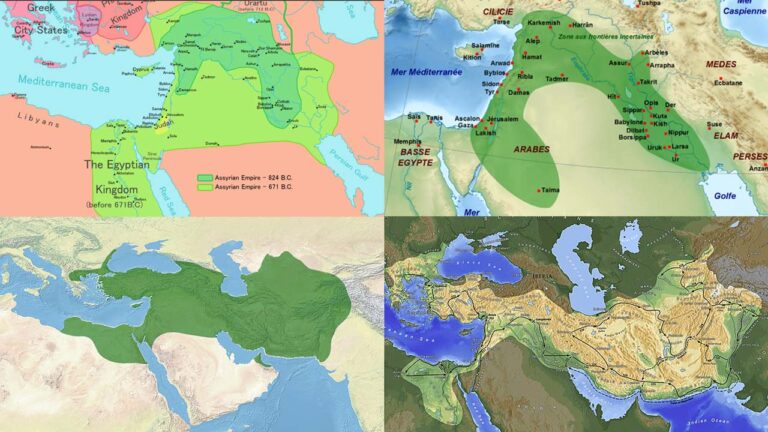
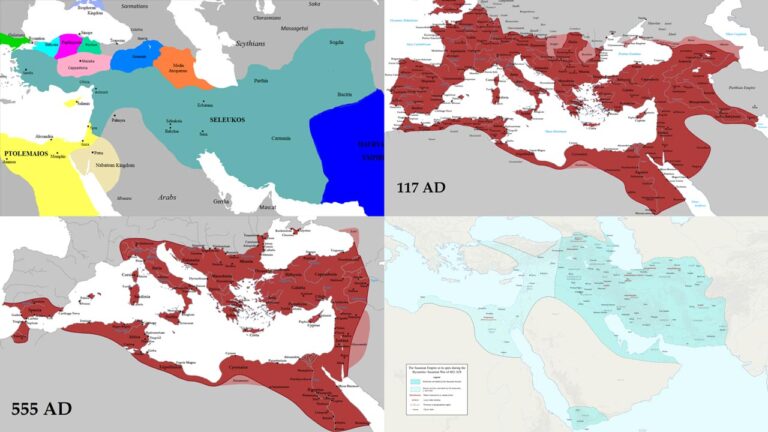
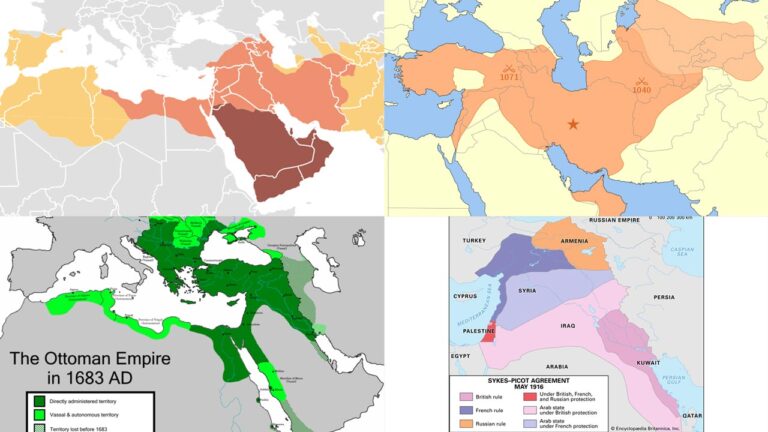
Figure 3.2.2.2: The Empires: Neo-Assyrian, Neo-Babylonian, Achaemenid, Macdonian {Wikipedia> Users: Ningyou, Zunkir, WillemBK, Captain Blood~commonswiki}
Figure 3.2.2.3: The Empires: Seleucid, Roman, Byzantine, Sasanian {Wikipedia> Users: Javierfv1212, Tataryn, Tataryn, Ro4444}
Figure 3.2.2.4: Caliphates, Seljuk, Ottoman, Sykes-Picot Agreement {Wikipedia> Users: DieBuche, MapMaster, Chambo; Encyclopædia Britannica}
Christianity:
In the 1st century CE, the Apostle Thomas preached the Christ to Maaloulians, who were among the first to enter Christianity. Since then, a large number of shrines, churches and monasteries have been built in Maaloula. During the 4th century CE, Maaloula was the center of a bishopric. As history shows, its bishop Eutychus attended the first ecumenical council in 325 CE and signed the constitution of the Christian faith.
Maaloula catastrophe 2013:
On September 04, 2013, Maaloula was subjected to a brutal invasion by extremist groups. You can watch a video published by Al-Nusra Front media by clicking here. (Note: the video contains sensitive content)
According to an initial statement by al-Nusra Front issued on September 06, 2013, the factions and militants participated in the Maaloula invasion are: Ahrar al-Sham Islamic Movement, Zilzal al-Islam Brigade, which is affiliated with al-Nusra Front, Suqur al-Sham Brigade, Baba Amr Commandos Brigade, Baba Amr Revolutionaries Brigade, and the Qalamoun Liberation Front affiliated to the Ahfad al-Rasul Brigades.
According to another statement issued by the Qalamoun Liberation Front affiliated to the Ahfad al-Rasul Brigades on September 09, 2013, the participating factions and militants are: al-Nusra Front, the Qalamoun Liberation Front, Ahrar al-Sham Islamic Movement, the Men of God Brigade, the Praise Brigade, the Tahrir al-Sham Brigade, the Last of Prophets Brigade, Ahrar Al-Zawiya, Ghuraba Brigade, Brigade of Islam (Jaysh al-Islam), Al-Habib al-Mustafa Brigade.
According to graffiti and information found in Maaloula, several other factions participated, including: Omar Al-Farouq Brigade, Ain Mneen Martyrs Brigade, Ahrar Adra and Ahrar Bakh’a.
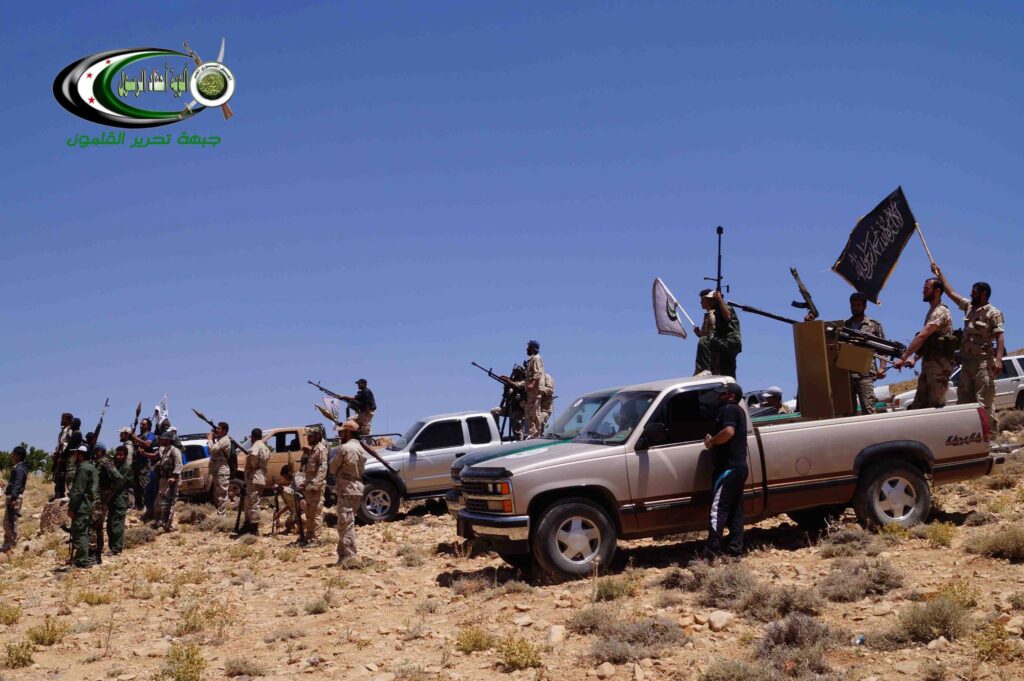
Figure 3.2.2.5: Photo published by the Qalamoun Liberation Front on September 25, 2013
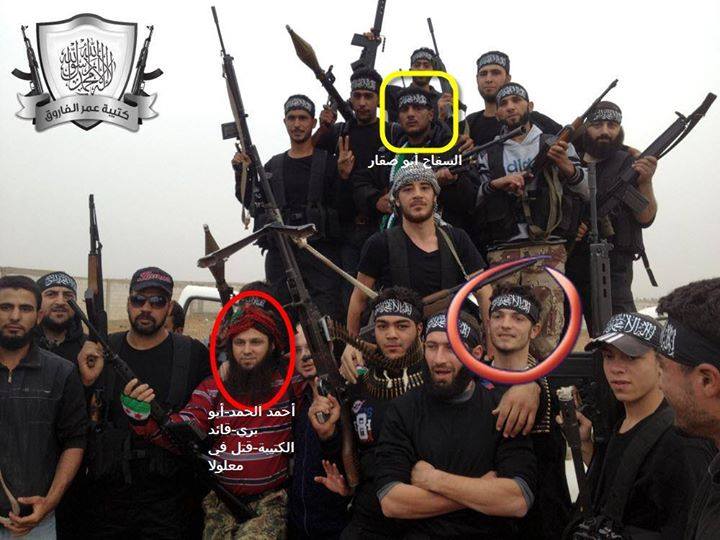
Figure 3.2.2.6: Omar Al-Farouq Brigade that participated in Maaloula invasion 2013
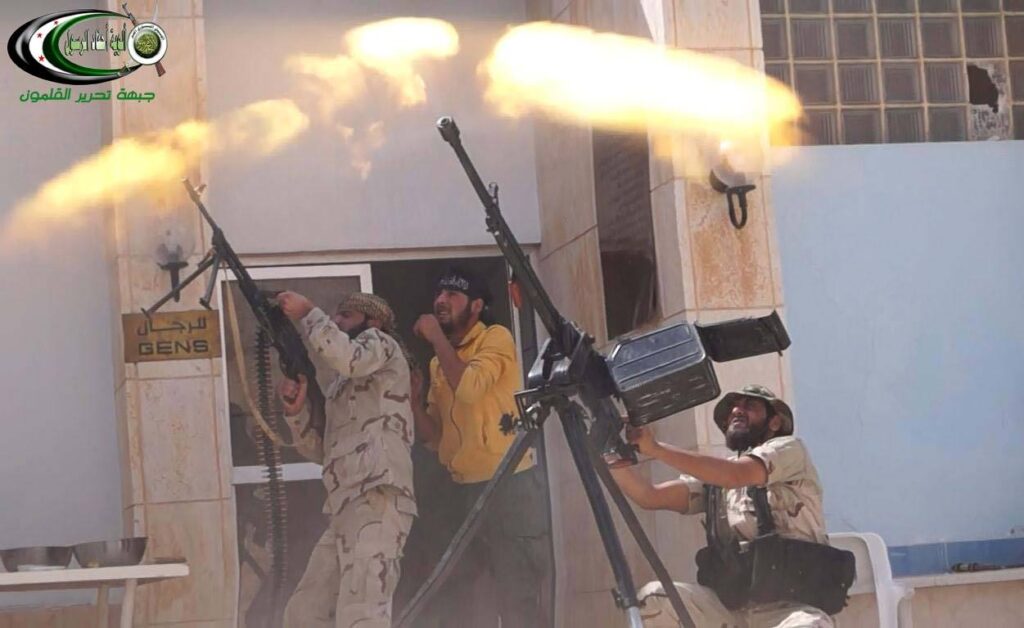
Figure 3.2.2.7: Anti-aircraft use by militias in Safir Maaloula Hotel, where they were initially stationed on September 06, 2013
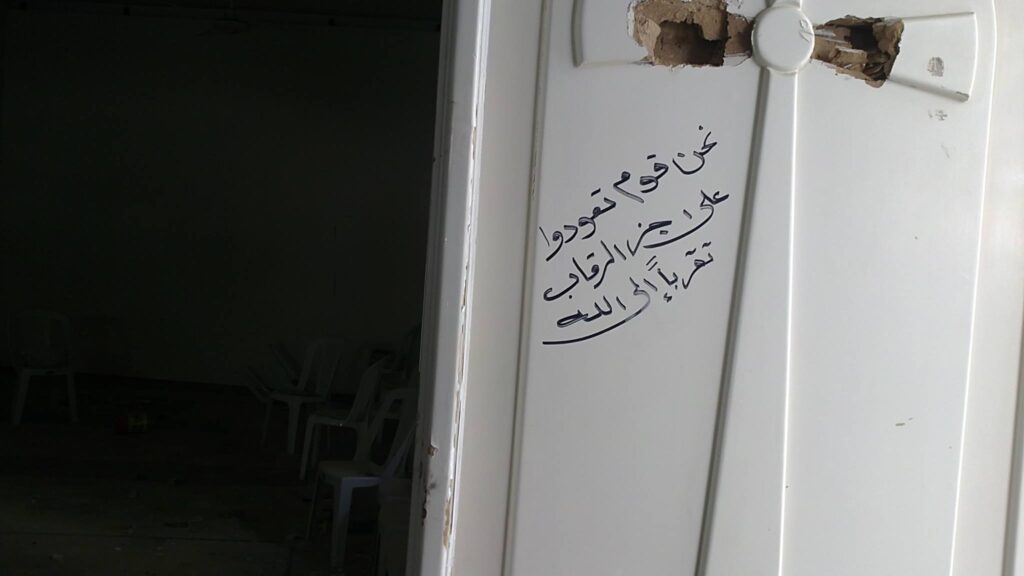
Figure 3.2.2.8: One of the many graffiti found in Maaloula after liberation that expresses the takfiri terrorist ideology. “We are a tribe accustomed to slitting necks to get closer to God.” (A quote from a famous sermon by a takfiri sheikh)
Extremist groups occupied Maaloula for several months, destroying the town’s infrastructure, looting, burning and vandalizing churches, monasteries and homes. Moreover, the militants kidnapped and killed a number of the town’s inhabitants, causing immense grief and suffering for the families of the martyrs and all the people of Maaloula.

Figure 3.2.2.9: Names of Maaloula martyrs and pictures of some of them {© Rimon Wehbi 2014}
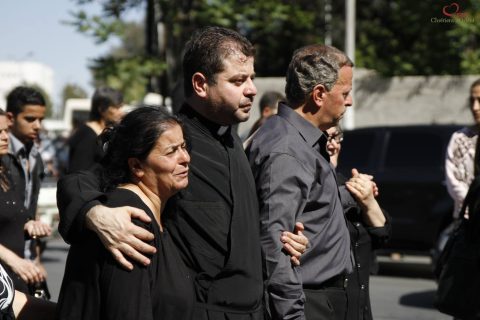
Figure 3.2.2.10: Brothers and relatives of “martyrs of faith” on the day the corpses of the kidnapped ones were recovered {© SOS on April 26, 2017}

Figure 3.2.2.11: St. John’s Church {© SANA Agency April 17, 2014}
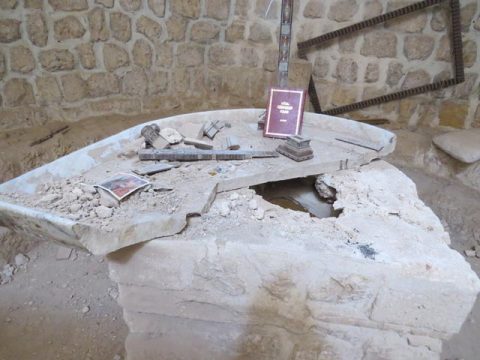
Fig. 3.2.2.12: The oldest Christian altar in the world at the Monastery of Saints Sergius and Bacchus {Photographer Unknown}
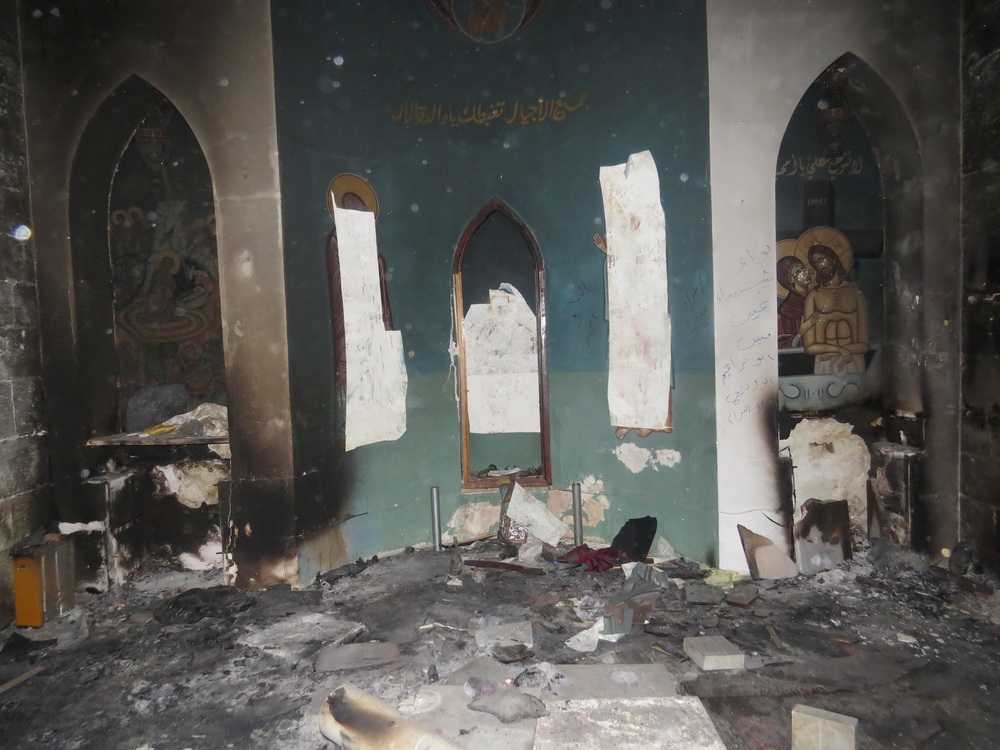
Fig. 3.2.2.13: Vandalism of icons {Photographer unknown April 20, 2014}

Figure 3.2.2.14: Vandalism icons and burning churches {© Abdo Haddad May 08, 2014}
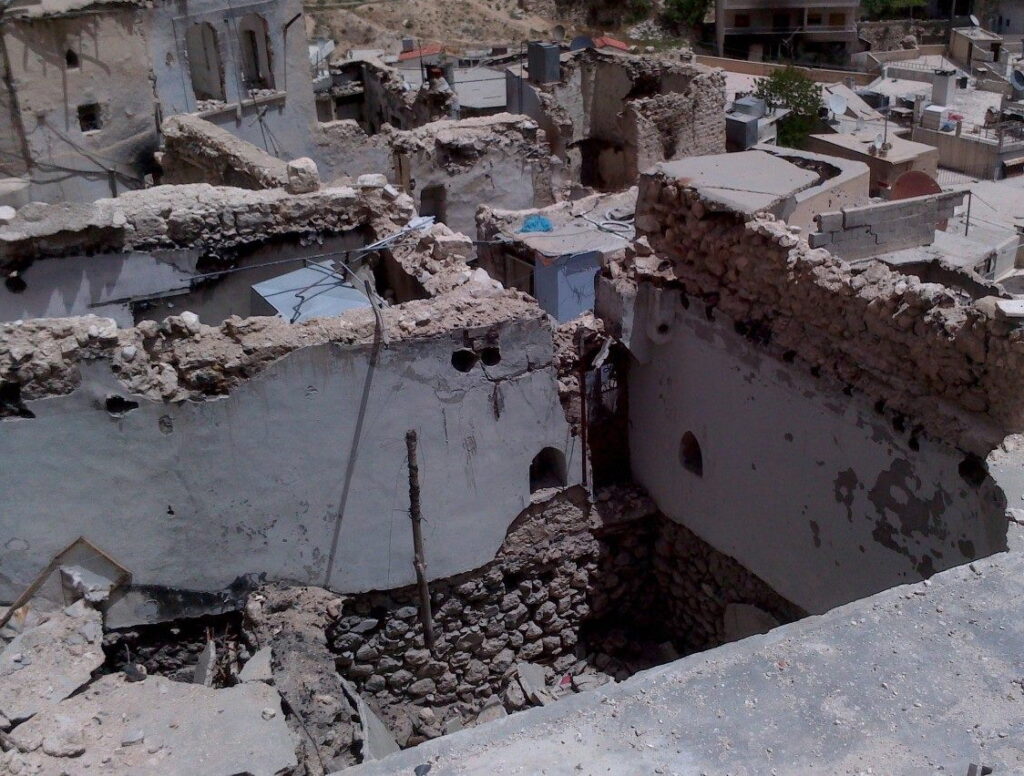
Figure 3.2.2.15: Houses devastation {© Emad Wakim May 05, 2014}
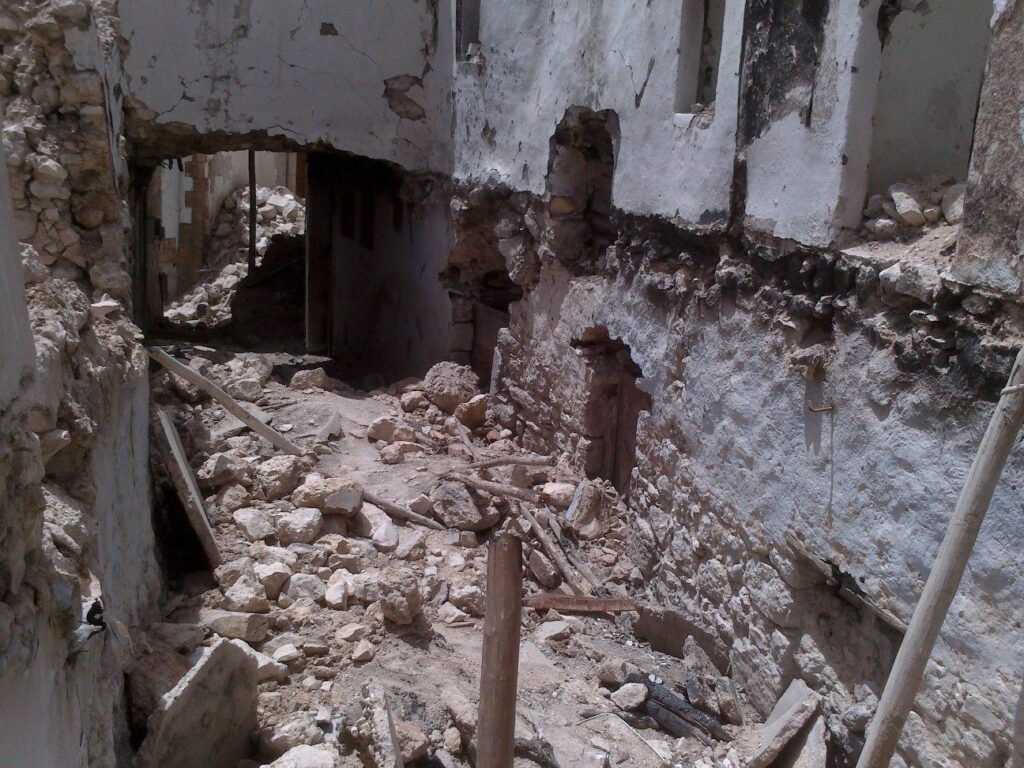
Figure 3.2.2.16: Houses devastation {© Emad Wakim May 05, 2014}
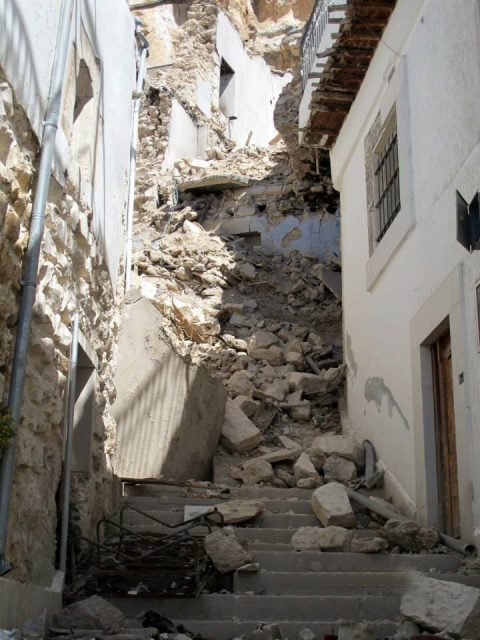
Figure 3.2.2.17: Houses devastation {© SANA Agency April 17, 2014}

Figure 3.2.2.18: Burning and vandalizing churches {© Faraj Chammas 2014}
By a miracle from God, the remaining people of Maaloula managed to flee to Damascus and other regions of Syria, or even to neighboring countries such as Lebanon, which led the Aramaic language to lose the most important factor in its steadfastness and survival until today, which is its isolation in the mountains. Today, the largest percentage of Maaloula live outside Maaloula, and despite their strong sense of belonging to it, they are forced to integrate into their new environment and abandon their mother tongue Aramaic.
The liberation of the town was a significant moment in the face of terrorism. The Syrian army, with the help of Hezbollah and National Defense Force (including many young men of Maaloula) launched a major offensive in 14.04.2014, which culminated in the withdrawal of the terrorists and the restoration of Maaloula.
The people of Maaloula were overjoyed to see their town liberated from terrorism, but the damage that had been done was extensive, huge and deplorable. Additionally, the displacement of the people of Maaloula have created a significant humanitarian crisis.
Despite all these challenges, the people of Maaloula, like its rocks, do not give up, and are determined to rebuild it and preserve its cultural heritage. With the support of the Syrian government and international organizations, especially volunteers of SOS Chrétiens d’Orient, they began the difficult and long task of reconstruction and rehabilitation. These efforts have helped to alleviate some of the suffering of the town’s inhabitants, but much more needs to be done to address the ongoing humanitarian crisis in the country.
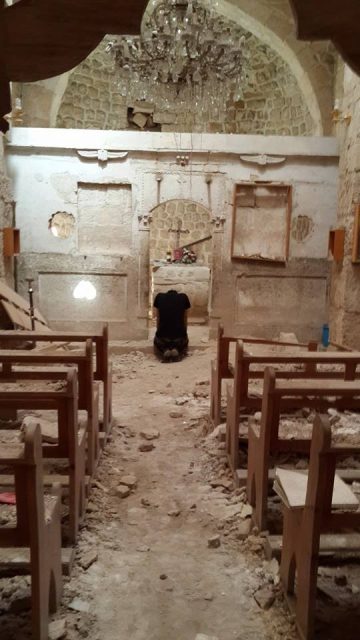
Figure 3.2.2.19: “Father, forgive them; for they know not what they do.” Luke 23: 34 {Photographer Unknown}
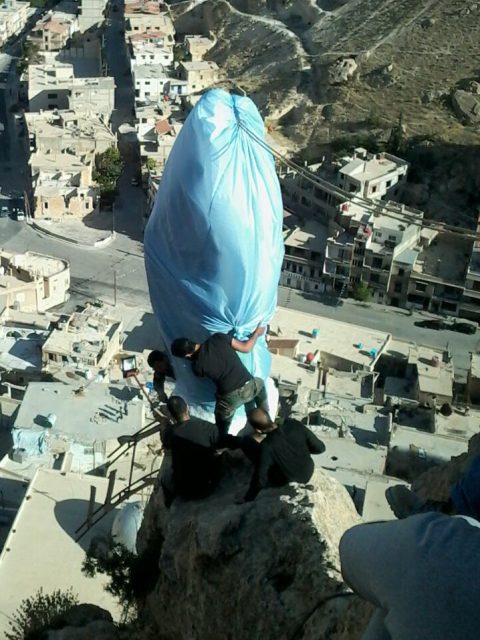
Figure 3.2.2.20: Re-erecting a new statue of Our Lady of Peace {Photographer Unknown June 12, 2015}
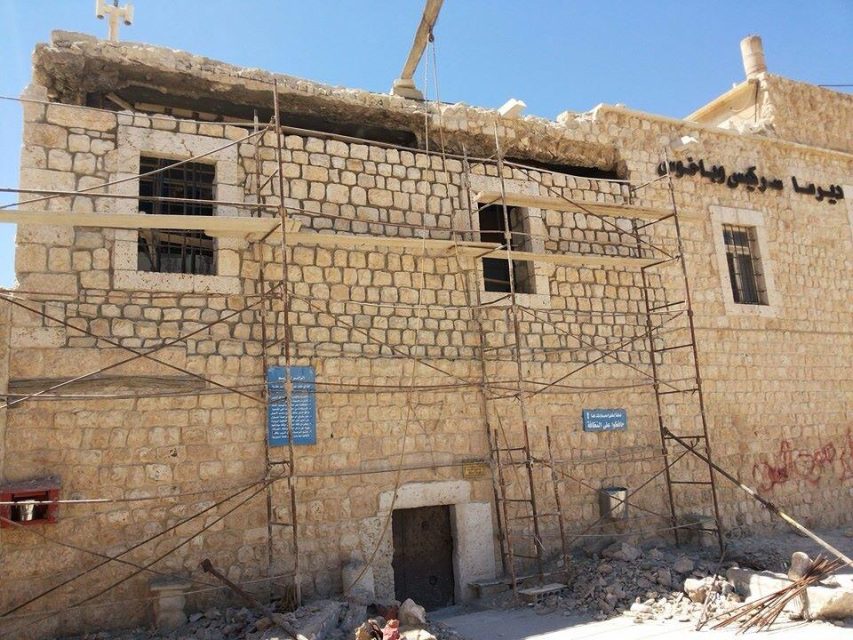
Figure 3.2.2.21: Restoration of the Monastery of Saints Sergius and Bacchus {Photographer Unknown April 24, 2015}
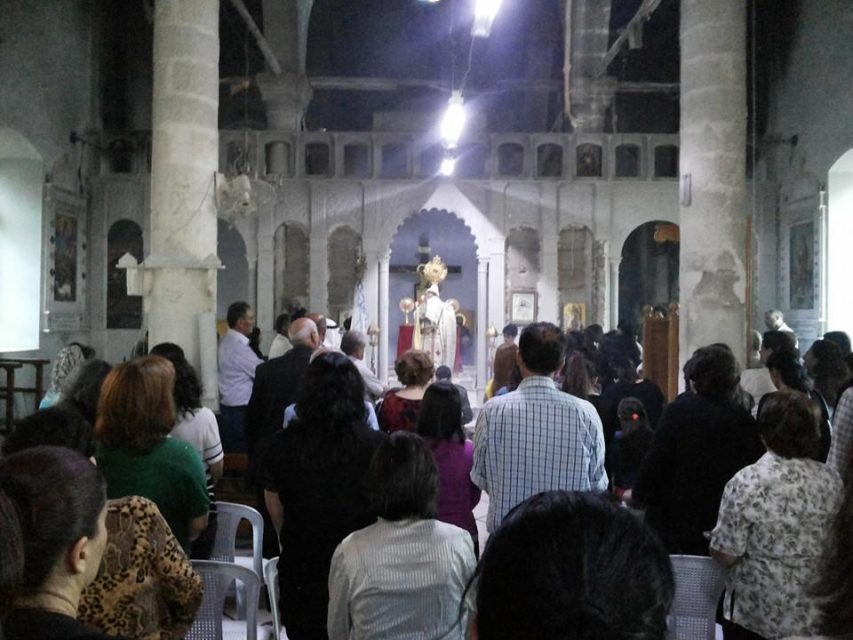
Figure 3.2.2.22: Feast of the Ascension mass {Photographer Unknown April 06, 2015}
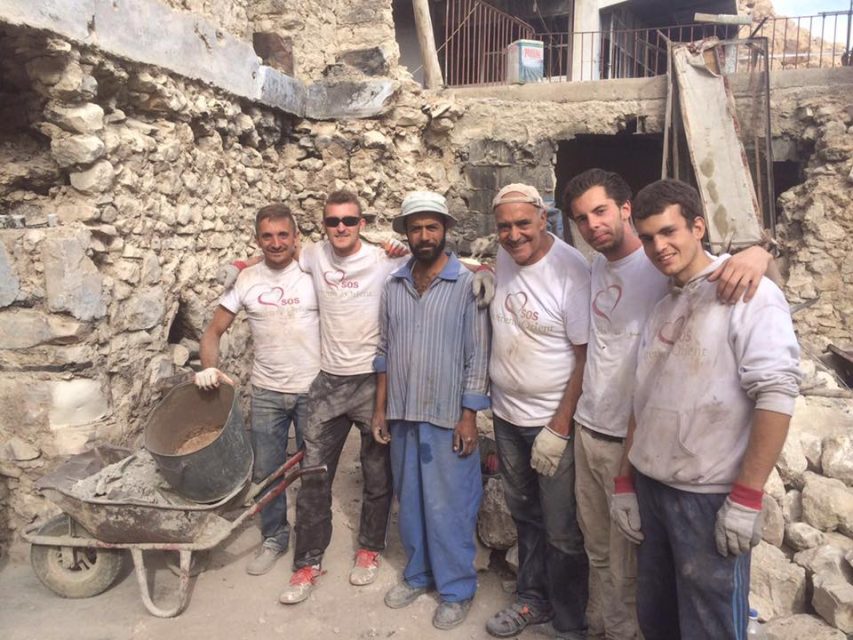
Figure 3.2.2.23: SOS volunteers {© Antoine Brochon 2016}
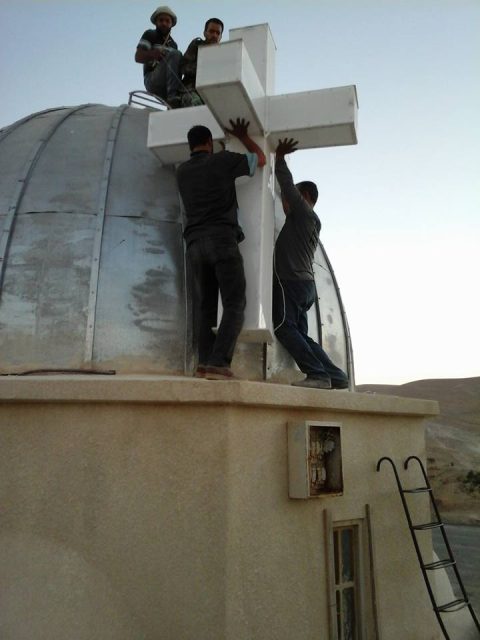
Figure 3.2.2.24: Re-erecting a new cross after the restoration of the dome of the Monastery of Saints Sergius and Bacchus {© Photographer Unknown July 27, 2016}
The destruction of cultural sites and elements is a common tactic used by extremist groups to erase the history and identity of a community, and to promote their own extremist ideology. But the liberation of Maaloula will remain a symbol of hope for the Syrian people, who continue to face immense challenges as a result of the conflict. It is a reminder that, despite the destruction and devastation that has been wrought, the people of Syria are resilient and determined to rebuild their country and preserve their cultural heritage for future generations.
Rimon Wehbi June 02, 2021
Last modified April 02, 2023
To cite this article:
Wehbi, Rimon. “History of Maaloula.” In Yawna. Article last modified April 02, 2023; retrieved MONTH DAY, YEAR. https://yawna.org/maaloula-history-en/.